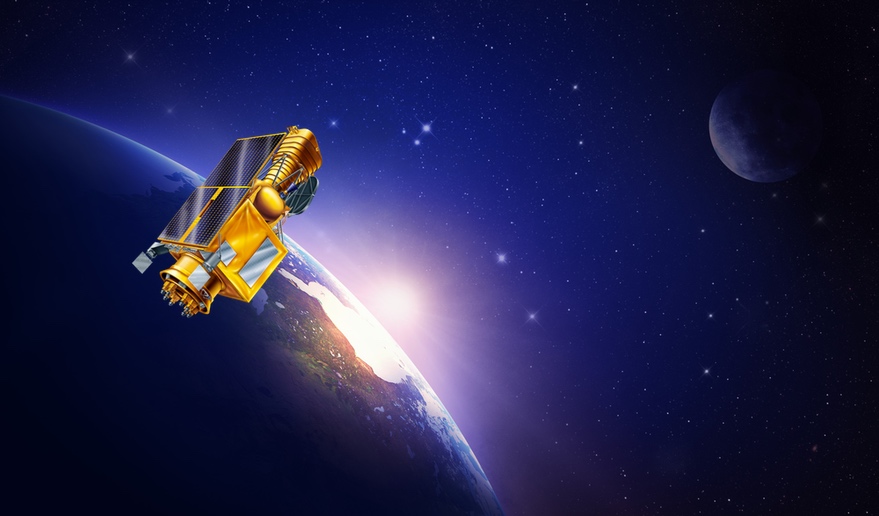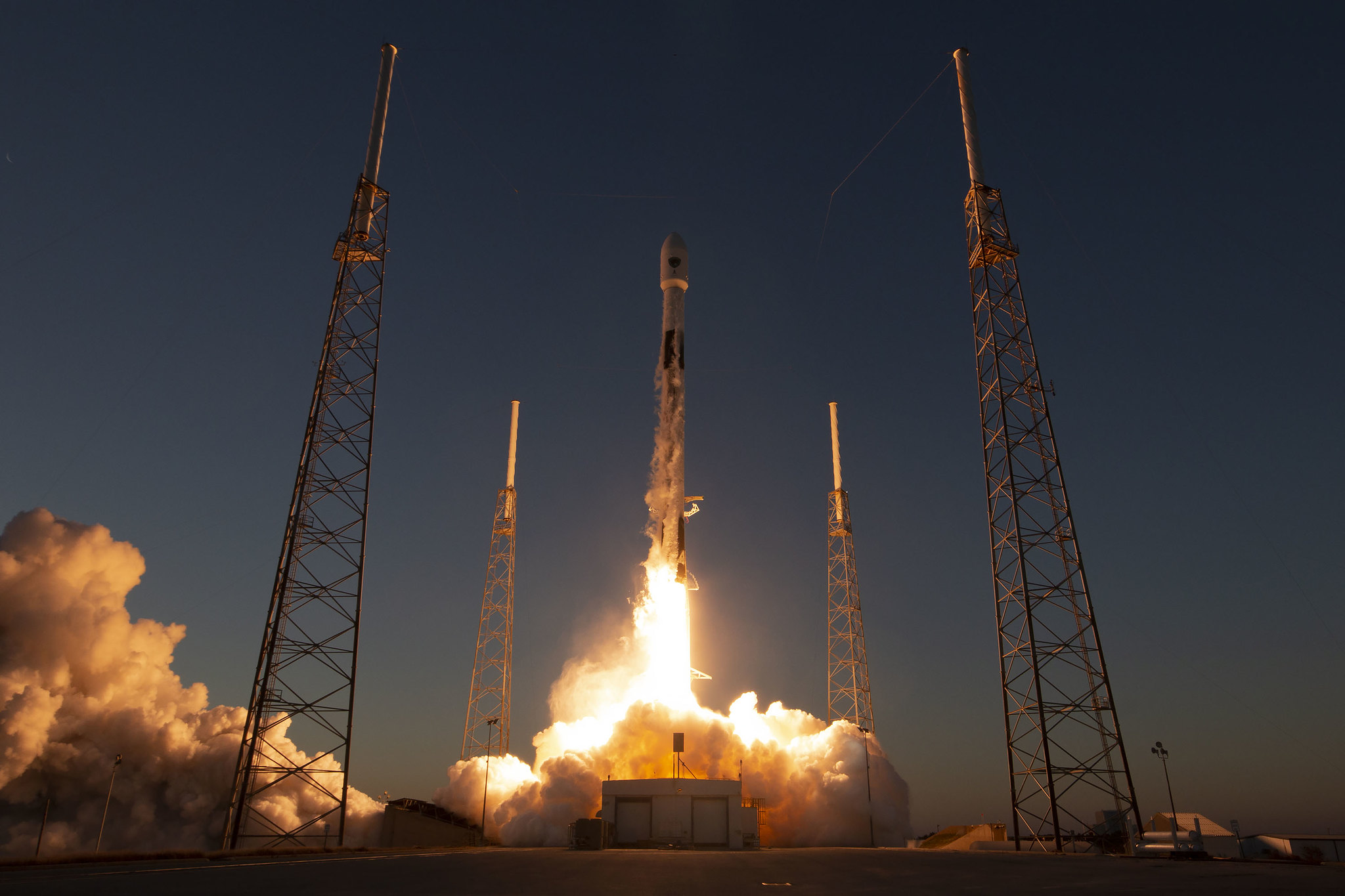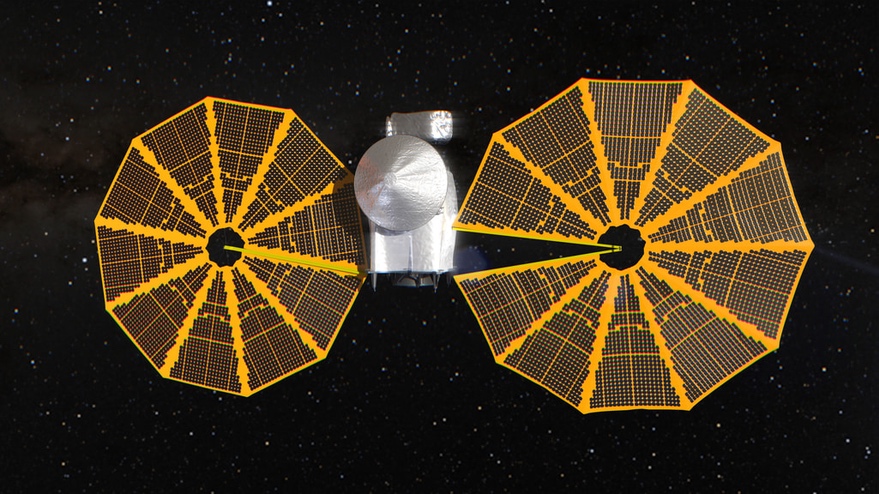NASA to cooperate on Israeli astrophysics mission
Original Publication Date: 2023-01-23 03:17

The agreement could be signed as soon as later this month. NASA would provide the launch of Ultrasat, which will operate in geostationary orbit. NASA will likely arrange to fly Ultrasat as a secondary payload on a commercial launch. Ultrasat will carry an ultraviolet telescope with a wide field of view.
Lockheed Martin eyes international customers for GPS augmentation systems
Original Publication Date: 2023-01-22 11:22

Lockheed Martin has built 10 GPS 3 satellites under a 2008 contract from the U.S. Air Force. The company developed a satellite-based augmentation system that leverages both GPS and Galileo. Lockheed Martin in September won a $1.18 billion 19-year contract to develop and operate the Southern Positioning Augmentation Network.
NASA suspends efforts to fully deploy Lucy solar array
Original Publication Date: 2023-01-22 00:07

NASA has been trying to fully deploy a solar array on its Lucy spacecraft. The latest effort to latch one of two solar arrays on Lucy, more than a month earlier, failed. The agency has not ruled out another attempt to lock the array, but not until late 2024.
NASASpaceFlight.com
India launches a new ocean monitoring satellite on Saturday morning. The EOS-06 spacecraft was delivered into a low Earth orbit. The mission, PSLV C54, lifted off from the Satish Dhawan Space Centre at 11:56 local time (06:26 UTC)
Commercial Archives
SpaceX carried out the first Starlink launch of 2023 with a mission placed 51 satellites into orbit to resume deployment of the constellation’s second shell. The Group 2-4 mission, which was delayed from November, lifted off at 7:43 AM PST Thursday (15:43 UTC) aboard a Falcon 9 rocket.
International Archives
Chang Zheng 2D successfully launches 14 payloads to Sun-synchronous orbit. China has still been unable to make contact with its Zhurong Mars rover. The launch comes at the end of a week that has also seen news about a reusable YF-100 engine.
ISS Updates – Spaceflight101 – International Space Station

A veteran NASA spacewalker and an EVA rookie from Japan ended their week with nearly six hours of work outside the International Space Station on Friday. The restoration of the Station’s Mobile Servicing System started last year and continued in January to provide Canadarm2 with a new pair of grappling hands.
Featured – Spaceflight101

SpaceX Falcon 9 takes to the skies over Florida’s Cape Canaveral Monday afternoon. First of at least six cargo ships inbound to the U.S. Segment of ISS this year. Dragon spacecraft will deliver science gear, supplies and maintenance hardware to the orbiting laboratory.
News – Spaceflight101

A Russian Rockot booster is set to blast off from the Plesetsk Cosmodrome at 17:57 UTC with the Sentinel-3B multi-function satellite. The rocket will carry the multi-function Sentinel-3B satellite into orbit. The launch is scheduled to take place on Wednesday.
Re-Entry: Long March 11 Rocket Body – Spaceflight101

The CZ-11 fourth stage used leftover propellant for a partial de-orbit maneuver, lowering its perigee to 120 Kilometers. It is reportedly built around a YF-50 main engine and conducts the orbital circularization after the three CZ-11 stages finish their job.
NASA’s Lunar Flashlight Team Assessing Spacecraft’s Propulsion System

Lunar Flashlight is the first interplanetary spacecraft to use a new kind of “green” propellant. The SmallSat will use a new laser reflectometer built with four near-infrared lasers to shine a light into the permanently shadowed craters at the lunar South Pole. Lunar Flashlight will employ an energy-efficient near-rectilinear halo orbit.
NASA Scientists and Satellites Make Sense of Earth’s Subtle Motions

JPL scientists are mapping where the Hayward Fault is creeping to better understand how much of it is likely to slip in the next large earthquake. Creeping faults are less likely to produce large earthquakes because the motion relieves much of the stress. JPL’s Zhen Liu is using InSAR data to study a different kind of motion in the earthquake-prone Pacific Northwest.
NASA’s TESS Discovers Planetary System’s Second Earth-Size World

Scientists have identified an Earth-size world, called TOI 700 e, orbiting within the habitable zone of its star. The world is 95% Earth’s size and likely rocky. Astronomers previously discovered three planets in this system, called TOi 700 b, c, and d.
NASA Wants You to Help Study Planets Around Other Stars

Exoplanet Watch is a new NASA program that lets people search for exoplanets. Participants can use their own telescopes to detect planets outside our solar system. They can also look for exoplanets in data from other telescopes using a computer or smartphone. Exoplanet Watch began in 2018 under NASA’s Universe of Learning program.
NASA Space Missions Pinpoint Sources of CO2 Emissions on Earth

Emissions from large facilities such as power plants and refineries account for about half of global carbon dioxide emissions from fossil fuels. Bełchatów Power Station, in operation since 1988, is the largest lignite-fired power plant in the world, with a reported capacity of 5,102 megawatts. The Polish government has drafted plans to close the plant by the end of 2036.
Watch the Latest Water Satellite Unfold Itself in Space

The Surface Water and Ocean Topography (SWOT) satellite launched into Earth orbit on Friday, Dec. 16. The solar arrays fully deployed shortly after launch, taking about 10 minutes. The mission monitors and controls the satellite using telemetry data, but it also equipped spacecraft with four customized commercial cameras.
Construction Begins on NASA’s Next-Generation Asteroid Hunter

NASA’s Near-Earth Object Surveyor recently passed a rigorous technical and programmatic review. Now the mission is transitioning into the final design-and-fabrication phase. The mission supports the objectives of NASA’s Planetary Defense Coordination Office (PDCO)
